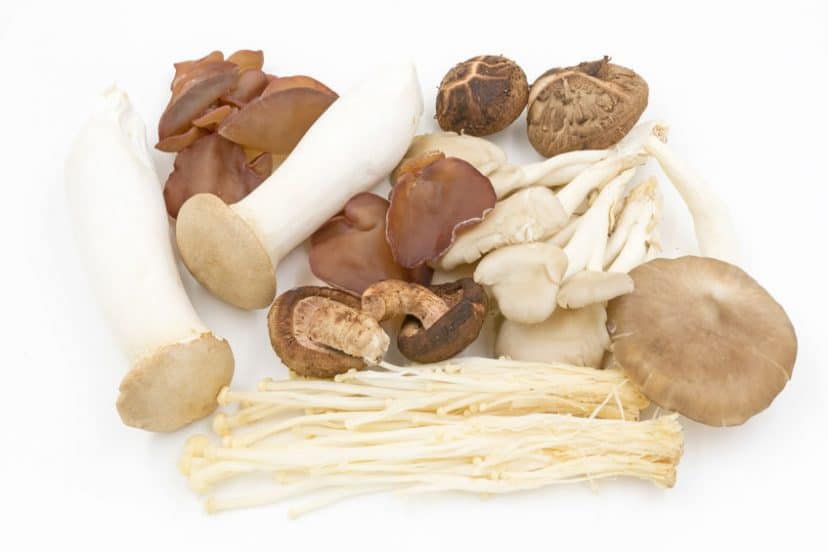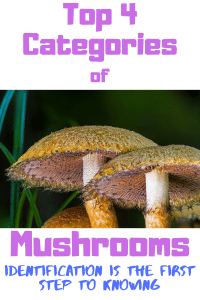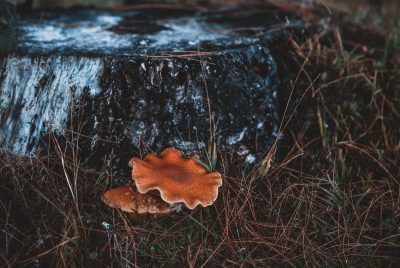The Reishi mushroom, or Ganoderma Lucidum, has been used in Asia for its medicinal value for…
The 4 Major Categories of Mushrooms

Are you thinking of growing your own medicinal mushrooms, but have no clue as to where to begin? Or maybe you would like to start cooking up some edible mushrooms to add to your favorite culinary dish. With the thousands of types of mushrooms out there, it can be a daunting task trying to figure out whether a Lion’s Mane will taste good or if a Cordyceps is even edible. Learning the four major categories of mushrooms—Saprotrophic, Mycorrhizal, Parasitic, and Endophytic—will greatly enhance your ability to differentiate aspects like medicinal value, edibles, and most important, whether they are poisonous.
Regardless if your goal is to forage, eat, or grow your own mushrooms, gaining an understanding of the four major categories of mushrooms will better serve you.
Saprotrophic Mushrooms
Many think of fungi in negative ways and rarely comprehend the important role some of them play in the local ecosystem. Saprotrophic mushrooms decompose plant matter and convert it into nutrients. This means they speed up the decaying process for the trees or plants they attach, which is an important role for the ecosystem. In scientific terms, this is where carbons are transferred into the atmosphere as carbon monoxide.
Saprotrophic mushrooms include common edibles species like Cremini, Portabella, Shiitake, White Button, and Morel fungi. They also require a set of specific environmental conditions in order to grow. Saprotrophic require oxygen, water and substrate or soil with a pH level of 7 or less and temperatures on the cooler side.
For those looking to gain a further understanding of Saprotrophic mushrooms, you can access a very detailed book here: Ecology of Saprotrophic Basidiomycetes (Volume 28)
Mycorrhizal Mushrooms
The Mycorrhizal mushroom is one of the categories of mushrooms that play an important role in the ecosystem. The word Mycorrhizal is a Latin term meaning fungus root, which perfectly describes its role within its habitat.
Mycorrhizal fungi mainly form a symbiotic relationship with various wild plants and trees. This type of mushroom survives by feeding on the plant or trees sugar via attaching to its roots. In exchange, the Mycorrhizal provides its host with water and obscure nutrients like phosphorus. They also provide a protective barrier for their hosts against a myriad of diseases too.
Mycorrhizal mushrooms are broken down into 7 classifications depending on where they colonize on their hosts:
- Ectotrophic
- Ericaceous
- Ectomycorrhizas
- Endomycorrhizas
- Orchid
- Arbuscular
- Arbutoid
Parasitic Mushrooms
The Parasitic mushroom is one of the categories of mushrooms that is not so good for ecosystems, yet, has great medicinal value for human consumption. Parasitic fungus attaches itself to plants and insects, but the relationship is not beneficial to the host at all. Three common types of parasitic mushrooms with huge medicinal benefits are Lion’s Mane, Chaga, and Coryceps.
For those looking for a general understanding of how parasitic fungi lives and interacts with our environment, we recommend reading British Parasitic Fungi
To gain an understanding of the relationship parasitic fungi have with their hosts, we shall use the example of the Cordyceps and ants. Cordyceps spores will be implanted on the leaves of certain plants that an ant will eat. Once the fungi’s bio-chemicals transfer over to the ant, it begins to rob the ant of all nutrients to sustain its life. When the ant finally dies, the fungus sends a fruiting body out of the ant’s head to launch more spores and infect more ants in the colony.
While parasitic mushrooms appear to be a nasty little addition to the ecosystem, their medicinal benefits for humans make them a necessary evil.
Like This Article? Pin it on Pinterest

Endophytic Mushrooms
Interestingly, the Endophytic is one of the categories of mushrooms that has revered great interest in the field of biology. While Endophytic take over their host like a parasitic mushroom, they have a common symbiotic relationship with their host like that of a Mycorrhizal. They also have promising medicinal benefits, making them quite unique.
Interestingly, many species of Endophytic fungi usually do not produce an actual mushroom. This makes observing them in nature extremely difficult, but they can be created inside a lab rather easily.
The medicinal value of Endophytic mushrooms should be the focus of this category. For instance, take the Endophytic fungus called Taxomyces andreanae, which is isolated from the Taxus brevifolia tree. This type of Endophytic fungus has the ability to produce Taxol, which is widely known in the scientific and medical community to be the anti-cancer compound. Within Endophytes ability to synthesize compounds associated with its host, it can also produce antidepressants like emodin and hypericin.
Endophytic fungi are a powerhouse in its ability to produce compounds that have medicinal benefits. Further research will only provide promising results to help keep people healthy and fit.
Conclusion
The top four categories of mushrooms provide benefits in different ways. Some offer great support to help ecosystems thrive. Others are not so supportive to our ecosystem, yet offer you medicinal benefits found in no other natural source. Then some offer incredible health benefits from their ability to synthesize compounds with their hosts. Gaining knowledge about the top four categories of mushrooms will only better assist you with knowing what to eat, what to forage, and where to find them.



